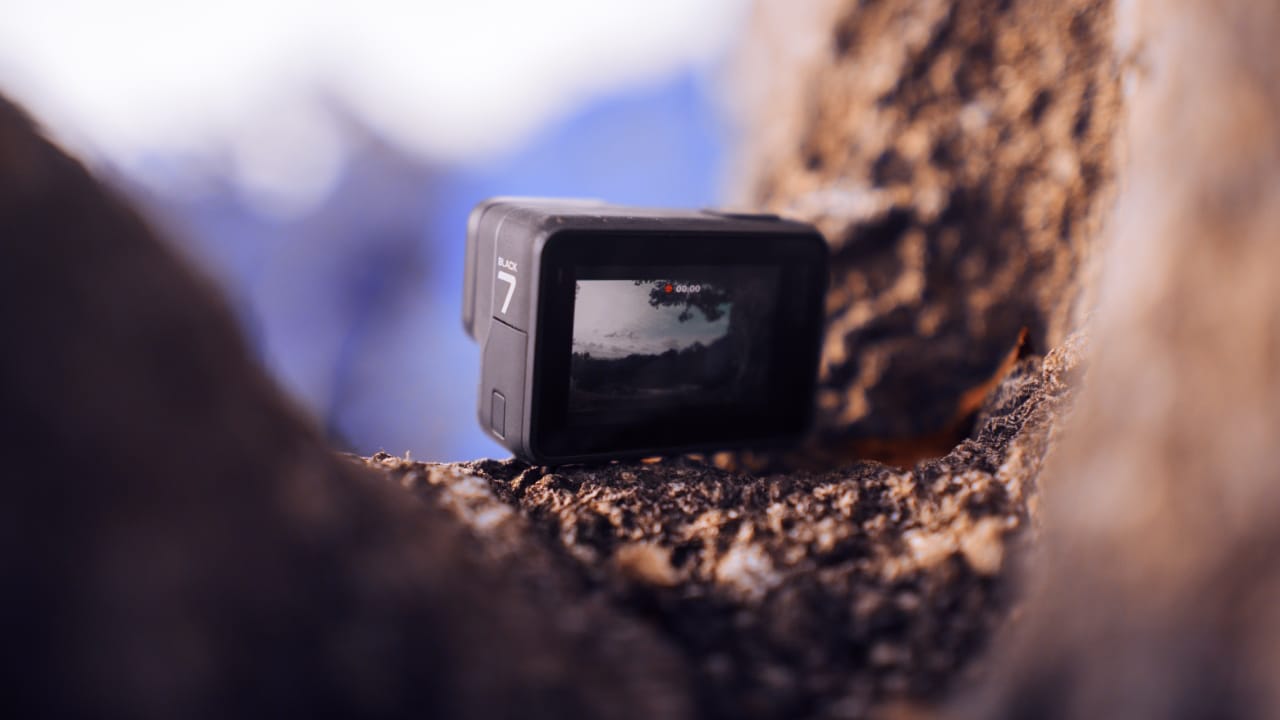
Feverish speculation over the summer insisted that the latest GoPro was going to feature a one-inch sensor. Of course, it didn’t, and here are some of the reasons why.
Ordinarily, it might not seem as if there’s much connection between excitement over a new GoPro on the one hand and shooting 65mm film for high-end cinema on the other. It’s perhaps no coincidence, however, that a production involving the first use of 65mm monochrome in decades executed such a capable smash-and-grab raid on the box office over the summer at the same time as there was speculation over the potential for a big chip in the next edition of the world’s favourite action camera. The high-end likes big frames, and, judging by the public reaction to the possibility of a larger-sensored GoPro, so did most of the people who shoot extreme sports for YouTube.
The question might be whether that’s a sensible desire - at either end of the scale. Despite the benefit of a nine-figure budget, Oppenheimer has plenty of buzzed closeups. And, as our own Simon Wyndham recently put it, there were many reasons GoPro might not choose to scale up the sensor in its next design. And, indeed, it didn’t.
Focus issues are not least among them, but there are also a number of other reasons why smaller sensors can be a blessing and a curse.
Bigger is not always better
At first glance, small sensors look like a nuisance. Achieving a wide field of view on a small sensor requires incredibly short focal lengths, generally in the single-digit millimetres. Creating lenses with incredibly short focal lengths can require complicated arrangements of glassware. At the same time, a small chip with a high resolution has many pixels close together. That alone demands more from the lens, which must be sharp enough to satisfy such closely spaced photosites. Then there’s the reality that a larger chip, lensed to capture a comparable field of view with a similar aperture, will capture more photons than a smaller chip. More photons mean a bigger signal, which means some combination of less noise and higher sensitivity. Bigger photosites potentially store more electrons, increasing dynamic range.
Wonderful. Let’s put full-frame sensors in everyone’s cell phone.
One-inch sensors are becoming common in phones, although fitting everything in presents challenges. The Sony Xperia PRO-I has such a sensor, which looks good on press releases but could be better in reality. In the tiny confines of a phone, it wasn’t possible to get the lens far enough away to project an image onto the whole chip, so only the middle twelve megapixels are used. We’ll leave it up to the reader to consider the validity of that approach, although Panasonic put a one-inch chip in the Lumix CM1 as early as 2014, and others have followed since.
As cellphone (and action camera) designers begin to accept there’s sometimes a need to zoom in, things get even trickier. The longer a lens we use, the trickier focus becomes. On current phones and action cameras, the sensors are sufficiently small and the lenses sufficiently wide that focus choices are simplified to “macro” or “the moon”. Go bigger, and that starts to change, which makes life hard. Has anyone ever tried strapping a follow focus onto a GoPro?
Even on a full-size camera such as a 6K Ursa Mini, shooting a documentary is a lot easier using the B4 lens mount adaptor and the cropped area of the sensor. For a long time, documentary was shot on 16mm film, which made sense for the same reasons. Lenses which are simultaneously smaller, lighter, faster, wider, longer and cheaper make life much easier.
Less of a compromise
And here’s the thing: 16mm does not look as nice as 35mm, but with modern camera technology, the sacrifice to achieve those conveniences is not nearly as significant. When people can make 8K broadcast cameras with acceptable performance using sensors smaller than Super-35mm, the real need for a one-inch-plus chip to shoot decent-looking 4K may not be that great, especially in the sort of applications on which action cameras are often deployed, where extensive post-production meddling is rare.
There are counter-arguments to all this. In theory, Bigger chips can have higher resolution without compromise, and that’s great because nothing looks better than oversampling an image and then blowing it down with a nice scaling algorithm. Again, unless we’re doing the equivalent of Fincher framing, where we shoot wide with the absolute expectation of tweaking every frame later, there’s not much need for five-digit pixel counts in modern production technique.
But in general, the current trend toward cameras with sensors the size of a paperback book might be something to approach with a dump truck full of caution. Bigger equals better is an easy slogan to like, but the practicalities can surprise people who haven’t spent a lot of time shooting 65mm – and who has? The idea that action cameras would be better off with arbitrarily more silicon in the front is dubious at best.
Edit: Changed part of headline text from 'an action camera' to 'the HERO12' to better reflect the author's original intentions. Apols from the editor.
Tags: Production Action cameras


Comments